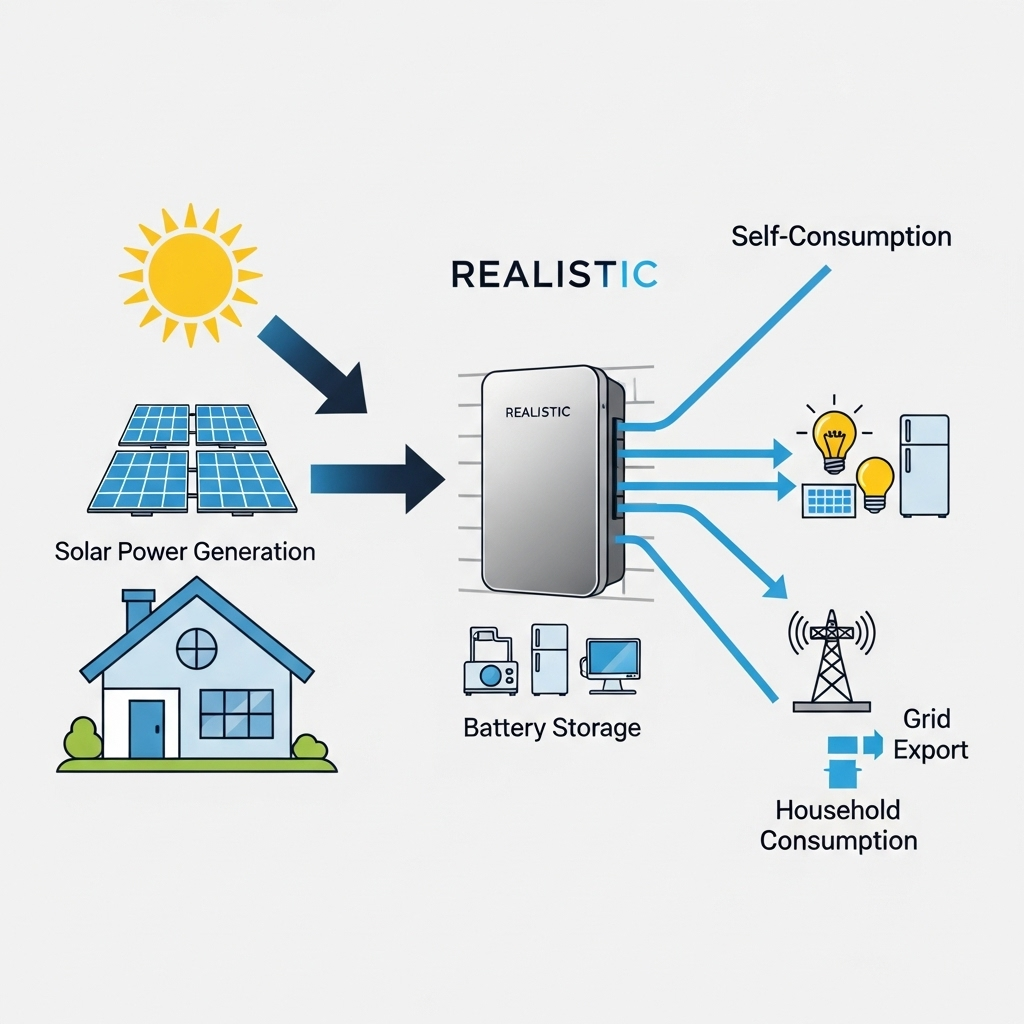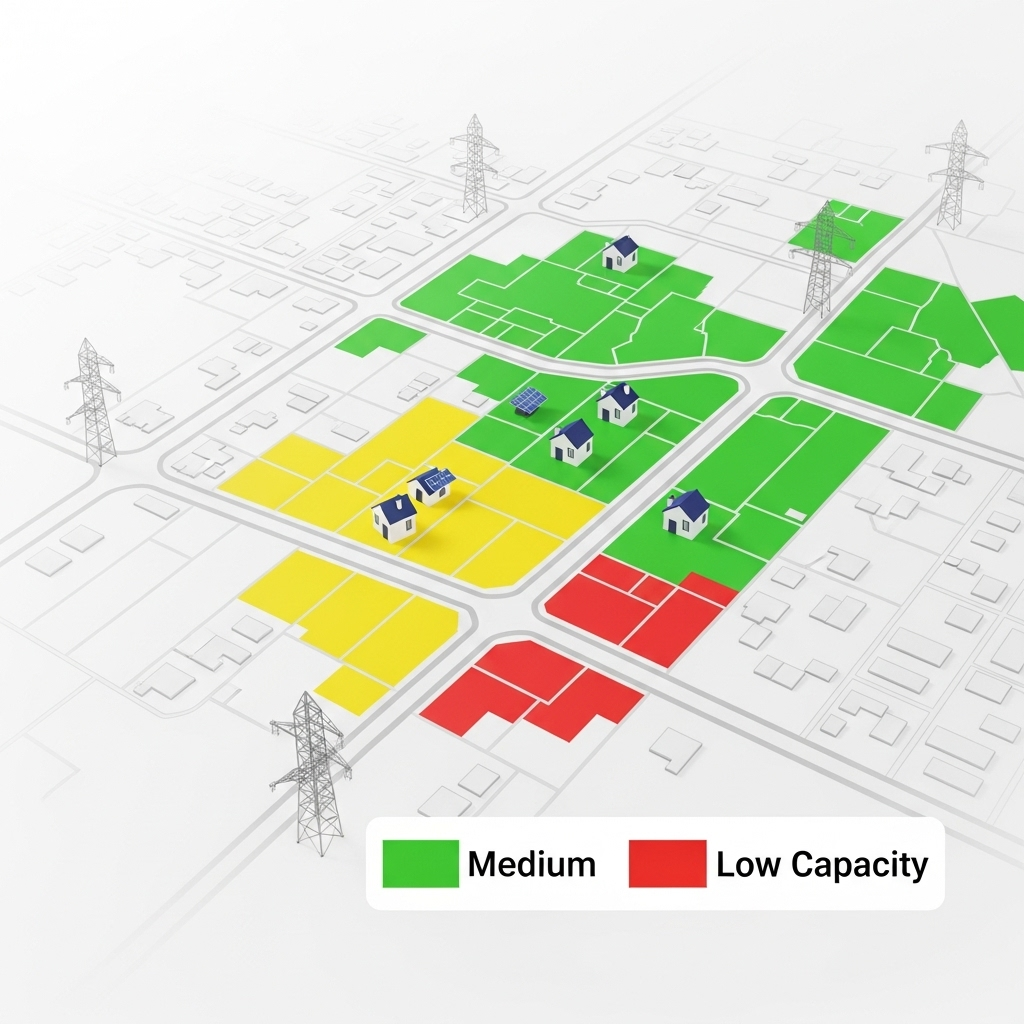You have decided to harness the power of the sun with a new photovoltaic (PV) system. This is a major step toward energy independence and lower electricity bills. But the process doesn't end with panels on your roof. The next critical phase is connecting your system to the electrical grid. This process involves two key elements: PV interconnection and net metering. Understanding them is vital for a smooth, profitable solar experience.
This guide breaks down these concepts into simple, actionable information. You will learn what it takes to connect your system, how you get compensated for the energy you produce, and how to navigate the rules that govern it all.
Understanding PV Interconnection
Interconnection is the bridge between your private solar power plant and the public utility grid. It's a formal process governed by technical and legal standards to ensure a safe and reliable connection for everyone.
What is Grid Interconnection?
Grid interconnection is the physical and contractual process of linking your solar PV system to the utility's electrical network. Once connected, you can draw power from the grid when your panels aren't producing enough electricity, such as at night. More importantly, you can send your excess solar generation to the grid for others to use.
This requires an interconnection agreement with your local utility. This document outlines the terms, conditions, and safety requirements for your system to operate in parallel with the grid. Without this approval, your system cannot be legally turned on.
The Technical Requirements (Grid Codes)
Utilities enforce strict technical standards, often called 'grid codes,' for any power-generating system connecting to their network. These rules are not arbitrary; they are in place to maintain grid stability and safety. Key requirements often include:
- Safety Equipment: Your system must have an accessible disconnect switch that allows utility workers to de-energize your system for grid maintenance or emergencies.
- Proper Inverter Functions: Modern inverters must have specific capabilities, like automatically shutting down during a grid outage to prevent back-feeding electricity, which could endanger line workers.
- System Inspection: A licensed electrician and a local building inspector must verify that the installation meets all electrical and safety codes before the utility grants final approval.
As the International Energy Agency (IEA) notes in its report, Getting Wind and Solar onto the Grid, while all power plants need to meet connection standards, renewable sources like solar often have additional considerations to ensure they support, rather than disrupt, the grid.
The Interconnection Process Step-by-Step
While specifics vary by utility, the interconnection process generally follows a clear path:
- Application: You or your installer submit an application to the utility, including system design details and equipment specifications.
- Utility Review: The utility's engineers review the application to ensure it meets their technical requirements and assess its potential impact on the local grid.
- Agreement: If approved, you will receive an interconnection agreement to sign.
- Installation & Inspection: Your system is installed according to the approved design and passes local electrical inspections.
- Permission to Operate (PTO): After a final review (and sometimes a utility inspection), the utility grants official Permission to Operate. Only then can you switch on your system and start exporting power.
Streamlining this process can significantly accelerate solar adoption. For example, a program in Chicago, detailed in the EERE Success Story on Chicago Solar Express, successfully cut permit wait times from over 30 days to just one day, making it faster and cheaper for residents to go solar.
Making Sense of Net Metering
If interconnection is the physical connection, net metering is the financial mechanism that makes it valuable. It is the policy that determines how you are compensated for the excess electricity your PV system sends to the grid.
How Net Metering Works
Think of net metering as a credit system for your energy production. When your solar panels generate more electricity than your home is using, the surplus power flows out to the grid. Your utility meter, which is typically a bi-directional meter, tracks this outflow. At the end of the billing period, the utility subtracts the energy you exported from the energy you imported.
You are only billed for your 'net' consumption. If you exported more than you used, you typically receive a credit on your bill, which can roll over to cover future months when your solar production is lower, like in the winter.
The Value of Your Exported Energy
Under traditional net metering policies, the credit for your exported energy is often valued at the full retail electricity rate. This one-to-one exchange provides the maximum financial return for solar owners. These favorable policies have been a primary driver of residential solar growth worldwide. The IEA's Renewables 2024 report highlights that generous incentives, including net metering, are a key reason behind the rapid expansion of distributed solar PV in regions like Europe.
However, as more solar comes online, some utilities are shifting away from this model. New policies like net billing, feed-in tariffs, or time-of-use export rates may offer lower compensation for exported power, changing the economic calculation for solar owners.
The Role of Energy Storage in Modern Interconnection
The evolving policy landscape makes pairing your solar panels with a battery energy storage system (ESS) an increasingly smart strategy. Storage gives you more control over the energy you produce.
Why Pair Solar with Batteries?
A solar-only system is limited. It doesn't generate power at night, and its financial return depends heavily on the utility's net metering policy. If the compensation for exported power is low, sending your valuable solar energy to the grid for pennies is not ideal.
An energy storage system solves this. It allows you to store your excess solar energy generated during the day instead of exporting it immediately. This stored energy can then be used to power your home after the sun goes down, providing true energy independence and protecting you from grid outages.
Maximizing Self-Consumption
With a battery, the primary goal shifts from exporting power to maximizing 'self-consumption.' Your system's controller intelligently directs energy: first to power your home, then to charge the battery, and only exporting to the grid as a last resort. This strategy is especially powerful in areas with net billing, as you avoid selling your solar power to the utility at a low rate and then buying it back later at a high rate.
To get the most from this setup, understanding your system's capabilities is crucial. As explained in the Ultimate Reference for Solar Storage Performance, metrics like Round-Trip Efficiency (RTE) are vital. A high RTE means less energy is lost when charging and discharging your battery, directly boosting your savings and the overall value of your investment.
Navigating Policy Changes and Future-Proofing Your System
The world of solar policy is dynamic. Staying informed and making strategic choices can protect your investment for years to come.
The Evolving Policy Landscape
As solar adoption grows, utilities must manage a changing grid. The IEA describes how widespread solar generation creates a new 'net demand' curve, which is the total demand for power minus the output from variable renewables. This operational shift is prompting regulators to reconsider compensation structures. Many regions are moving from net metering to alternatives.
| Policy | How It Works | Impact on Solar Owners |
|---|---|---|
| Net Metering | Exported energy is credited at the full retail rate, offsetting consumption on a 1:1 basis. | Highest financial return for exported power. Simple and effective. |
| Net Billing | Exported energy is credited at a lower rate (e.g., wholesale or 'avoided cost' rate) than the retail rate for imported energy. | Reduces the value of exported energy. Strongly incentivizes self-consumption with batteries. |
| Feed-in Tariff (FIT) | You sell all solar generation to the utility at a fixed rate and buy all consumed electricity from the grid. | Provides a predictable revenue stream, but you lose the benefit of direct self-consumption. |
Disclaimer: This table provides a general overview. Specific policies vary significantly by location. This information is not financial or legal advice.
Your Path to a Successful Grid Connection
Connecting your solar system to the grid is a milestone on your path to energy independence. PV interconnection is the technical and legal gateway, while net metering policies determine the financial rewards. By understanding the step-by-step process, the technical requirements, and the value of your exported energy, you can navigate the system with confidence.
As the energy landscape evolves, incorporating an energy storage system becomes a powerful strategy to maximize self-consumption and future-proof your investment against policy changes. Taking the time to understand these rules empowers you to make the most of your solar and storage system, securing a resilient and cost-effective energy future.
Frequently Asked Questions
What is the difference between interconnection and net metering?
Interconnection is the physical and legal process of connecting your solar system to the utility's grid. Net metering is the billing mechanism that credits you for the excess electricity you send to that grid. You must complete interconnection before you can benefit from net metering.
How long does the PV interconnection process take?
The timeline can vary widely, from a few weeks to several months. It depends on your utility's efficiency, the complexity of your project, and whether any grid upgrades are needed. Programs like Chicago's Solar Express show that streamlined processes can dramatically reduce this wait time.
Do I need a battery with my solar panels?
A battery is not always required for a grid-tied system, but it is highly recommended. It provides backup power during outages and allows you to store excess solar energy for use at night. This is especially valuable in areas with low export compensation rates (net billing), as it maximizes your financial savings by increasing self-consumption.
What happens if my utility changes its net metering policy?
In many cases, existing solar customers are 'grandfathered' into the policy that was active when their system was approved, protecting them from future changes for a set period. However, new customers will be subject to the new rules. This uncertainty is a strong reason to consider a battery, which makes you less dependent on utility export rates.
Is it difficult to get a permit for a solar system?
The difficulty of permitting depends on your local jurisdiction. Some areas have simplified, online processes, while others may require more paperwork and longer reviews. An experienced solar installer is invaluable in navigating this process efficiently. As projects like the Plug and Play PV system demonstrate, there is a strong industry push to simplify both installation and interconnection to make solar more accessible for everyone.





Leave a comment
All comments are moderated before being published.
This site is protected by hCaptcha and the hCaptcha Privacy Policy and Terms of Service apply.